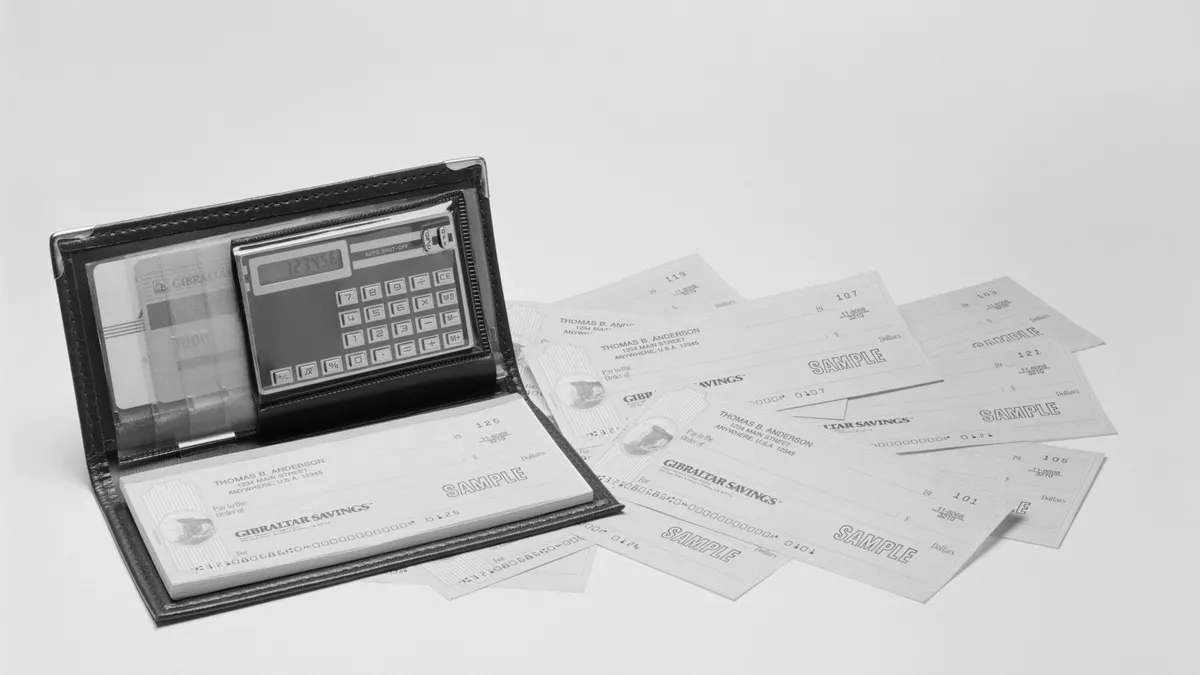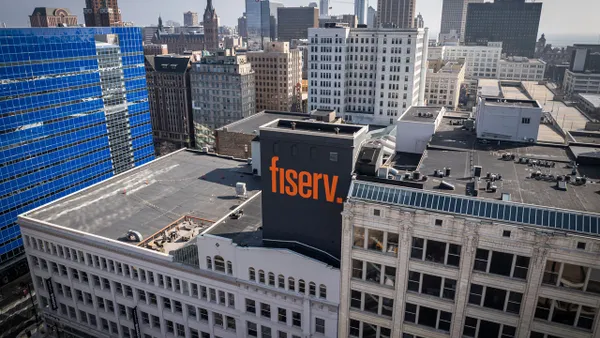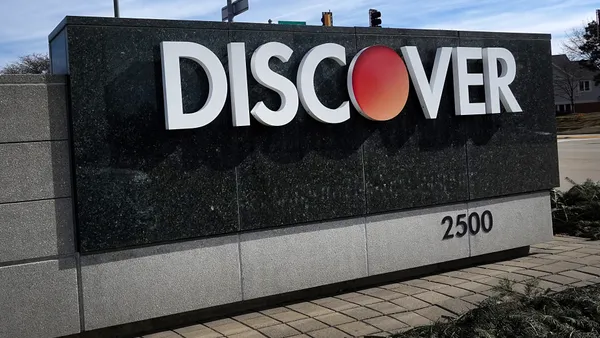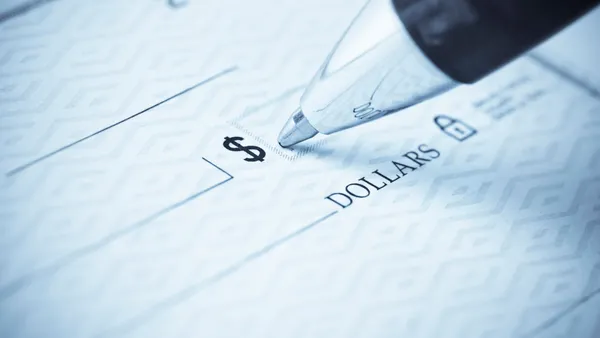Payments technology company ACI Worldwide counsels companies worldwide on payments, and its CEO, Tom Warsop, says the eradication of paper checks is overdue.
Not only are paper checks more prone to fraud, they’re a higher cost payment option, Warsop argued in an interview this month. That’s a big part of why he sees the Trump administration’s plan to shift the federal government away from the use of checks by September as smart.
As far as other efforts to increase the use of digital payments, Warsop agreed it was best to delay a Federal Reserve deadline for moving banks’ Fedwire payments to a new international standard. He also noted a “low” rate of adoption for banks taking up the Federal Reserve’s FedNow real-time payments system.
Editor’s note: This interview has been edited for clarity and brevity.
PAYMENTS DIVE: What’s your take on President Donald Trump’s executive order to have the federal government cease using paper checks by the end of September in favor of electronic payments?
TOM WARSOP: I think it's good for the country, good for the economy, good for the government, good for our citizens.
The federal government is already sending most payments electronically so what holes does this mandate plug?
There's still a very significant number of government disbursements that happen by paper check, and a lot of tax refunds happen by paper check, for example…So, if you look at it on a percentage basis, and I think that's what you're referring to, a very high percentage of payments already are electronic, and that's great. But I think the good news about this executive order is it's 100%, it goes all the way.
One reason that I think it’s good is fraud. Paper checks are, I believe the number is, 16 times more likely to be part of a fraudulent transaction than an electronic payment. And so clearly, that’s a massive difference. The cost of a check payment is many multiples of an electronic payment, like an ACH payment. So, cost is much higher. The time to realization of the payment by the consumer is much higher. There’s so many reasons why this is the right thing to do.

What other gaps are there and how should they be addressed?
There are people who are getting a tax refund that do not have a bank account. And so for those people, there are other ways to do it, through prepaid cards. There are some other organizations that have stepped in to handle that. For example, some of the tax preparation software companies, when you walk in and file your taxes with them, they’ll hand you a prepaid debit card right on the spot.
I think the federal government will have to get a little more aggressive in terms of making sure everyone has access to those electronic payment mechanisms.
I think this should have happened a long time ago, because a lot of investments have been made over a long period of time to make sure that those electronic payment channels are available. They are available. Use them.
U.S. business use of paper checks is more extensive than federal government use of paper checks. Do you think this government move will spur a change for businesses?
I do. It's not about the interest that they earn. It's about just cash flow management. And that float has contracted over the years. I think we're probably rushing towards the point where checks just aren't going to be a thing anymore.
Let’s talk about the government’s efforts to get banks to adopt the ISO 20022 standard for Fedwire funds transfers. Are banks prepared for the recently extended July deadline?
I think banks are generally ready, or nearly ready…I think the reason for (the extension) was (the Fed) felt there could be more testing. It wanted to make sure that it all worked because we're talking about payments that are really important to the economy. These are generally quite large payments – they're millions of dollars on average.
How about bank adoption of the Fed’s real-time payments system FedNow?
Adoption is still quite low, and that's generally across both sets of real-time rails, including the private RTP network where there has been more use. I think the bigger question is, what is it going to take for consumers and commercial customers to really jump in with both feet into real-time payments? I continue to believe that will require some incentive for the consumers and for commercial customers.
We’ve seen the examples in other parts of the world – India, Brazil, China – where you’ve seen these massive adoptions…We were part of a study that showed hundreds of billions of dollars of gross domestic product increases in the countries where we’ve seen high adoption, and I think the same will be true the U.S. It’s just going to take a while to get that adoption.
Correction: This story has been updated to correct the figure with respect to GDP commerce in the real-time payments study.











